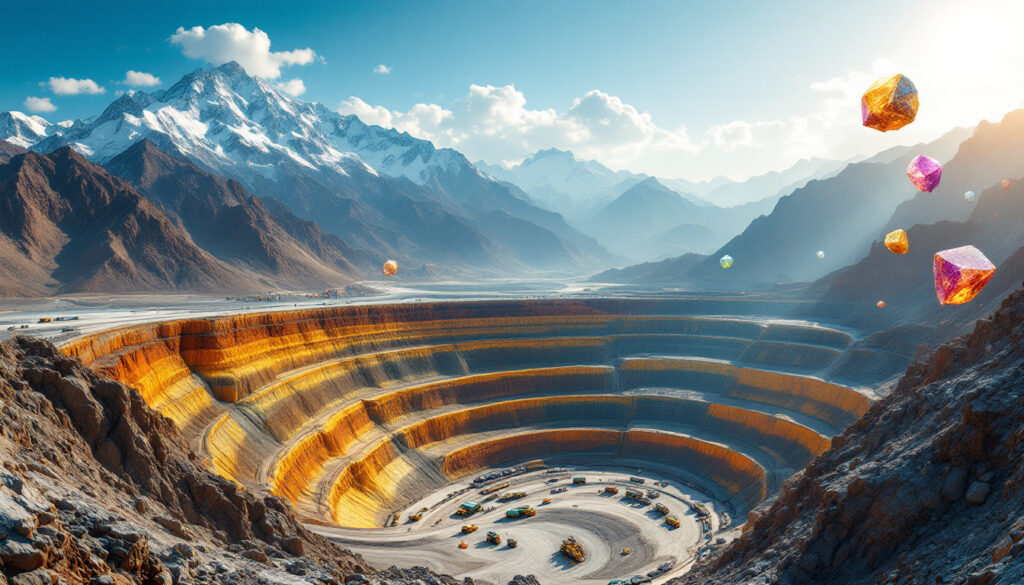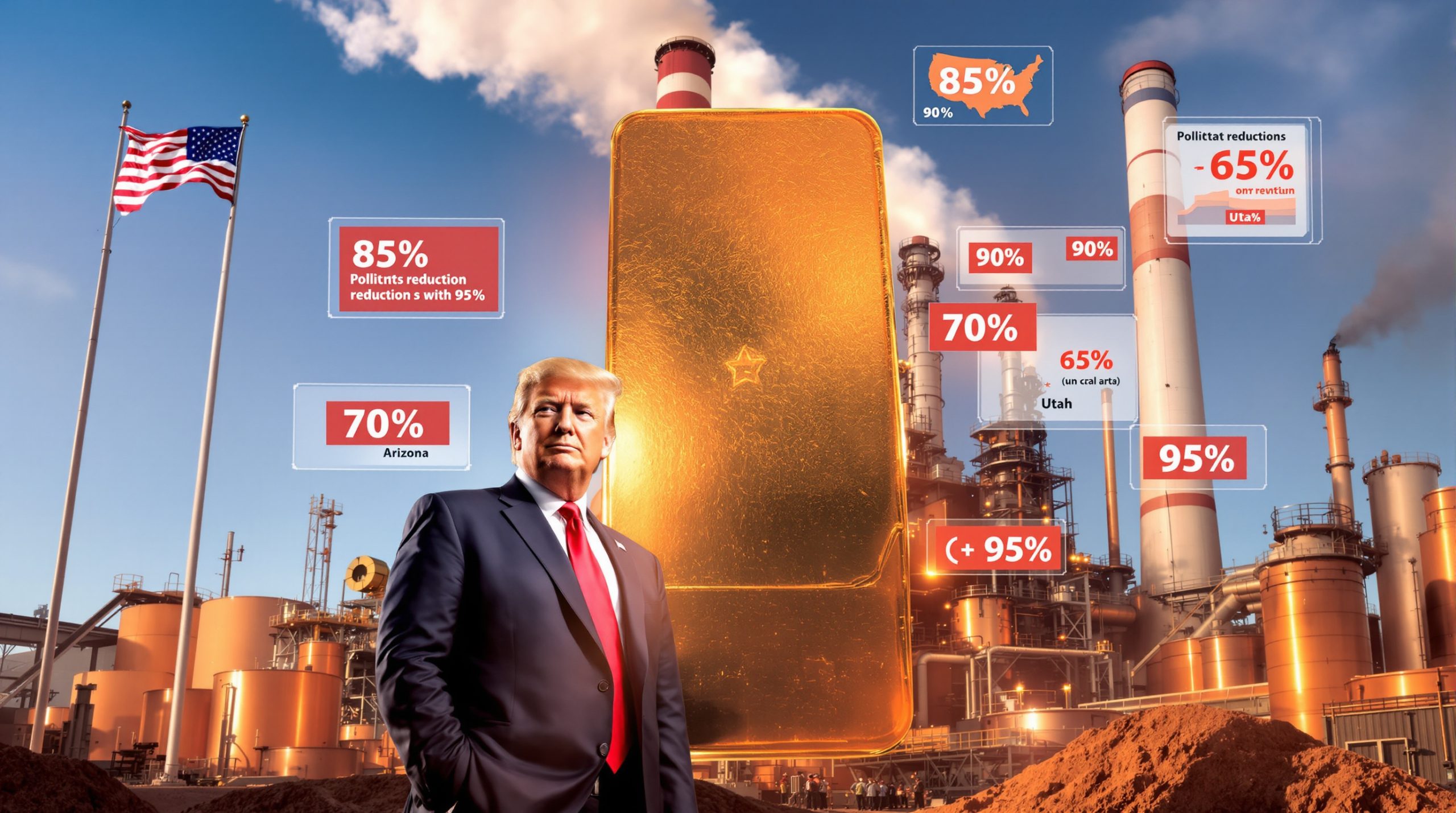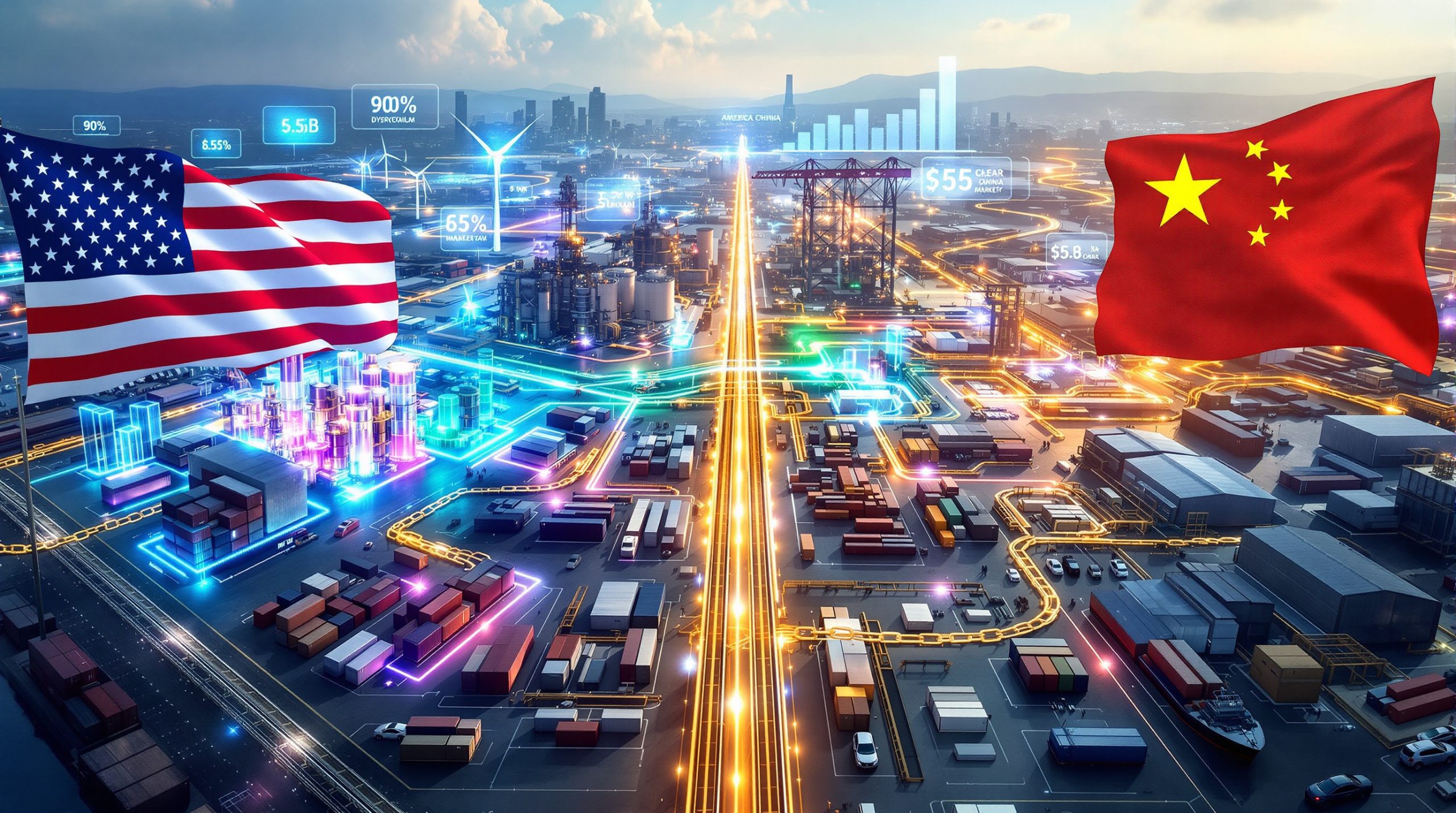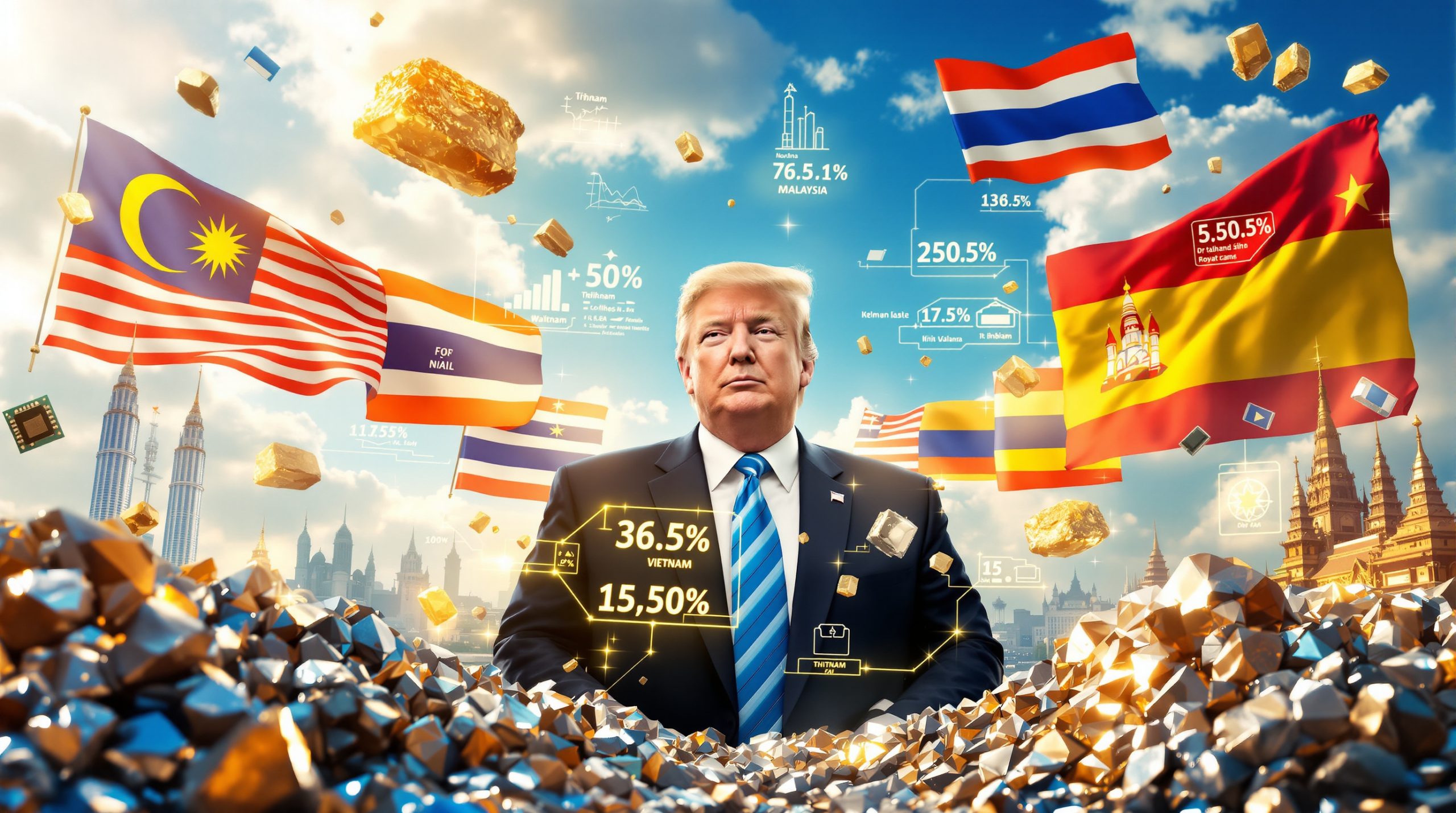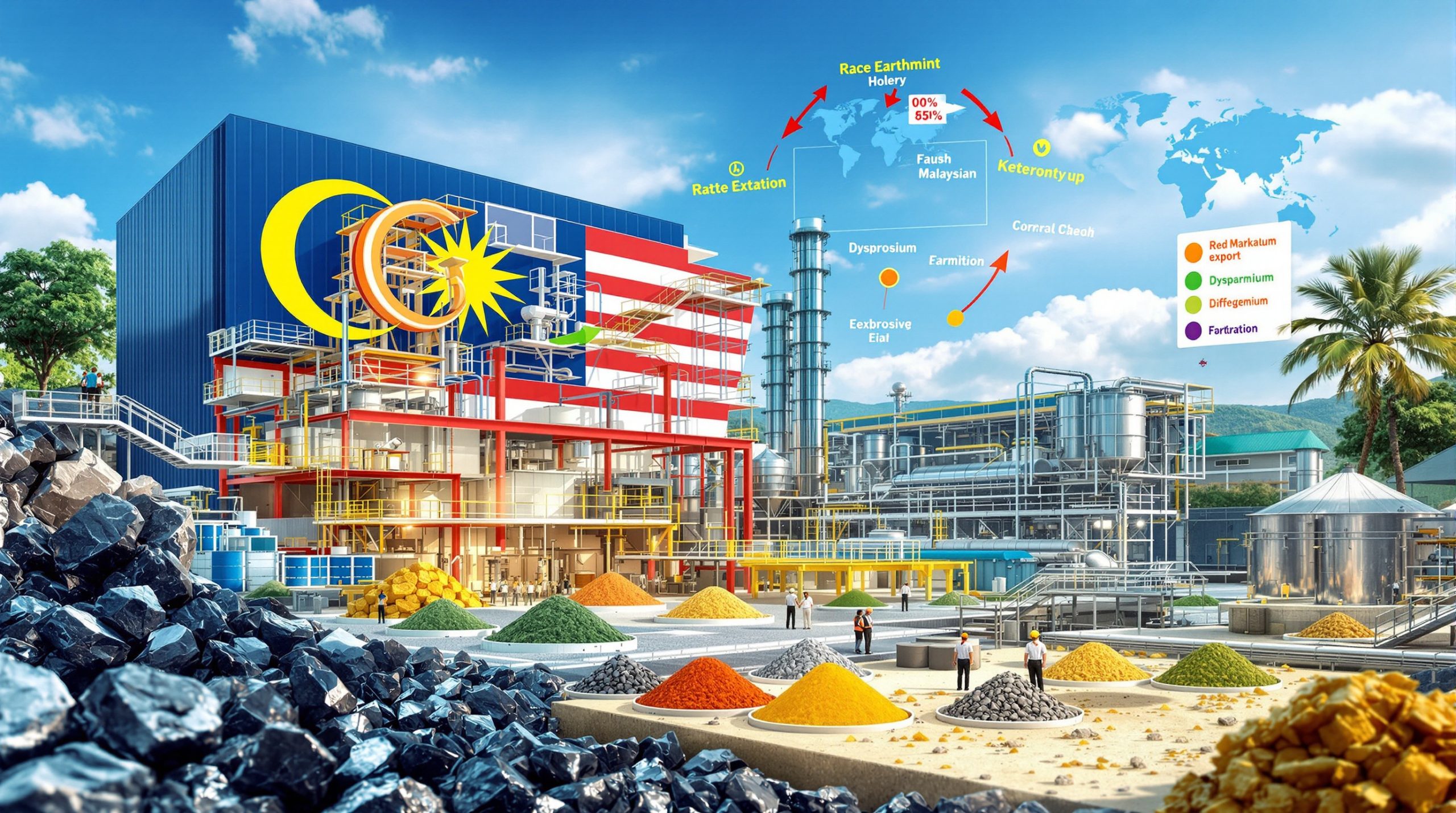Pakistan's Mineral Wealth: Unlocking Investment Opportunities in the Tethyan Belt
Pakistan sits at the crossroads of opportunity within the mineral-rich Tethyan Belt, positioning it as a potentially significant player in the global mining landscape. Despite identifying over 90 minerals throughout its diverse geological terrain, only about 50 are currently under active production, representing a staggering 45% of untapped potential waiting to be discovered and developed by forward-thinking investors.
The country's strategic location within the Tethyan Metallogenic Belt—a geological formation stretching from Europe through Asia—creates exceptional conditions for mineral concentration, particularly copper-gold porphyry deposits that rival some of the world's most productive mining regions. Understanding the geology of ore deposits is crucial for appreciating Pakistan's mineral potential.
What is Pakistan's Strategic Position in Global Mining?
Pakistan's unique geological positioning within the mineral-rich Tethyan Belt provides it with a significant competitive advantage in the global mining sector. This ancient geological formation, created through the collision of tectonic plates millions of years ago, has endowed the country with extraordinary mineral wealth concentrated in specific regions, particularly the western province of Balochistan.
The Tethyan Belt traverses through Pakistan in a northeast-southwest direction, hosting world-class deposits that remain largely underexplored compared to similar geological formations in Chile, Peru, and Indonesia. According to geological surveys, Pakistan's section of the Tethyan Belt contains mineralization patterns strikingly similar to those found in Chile's copper belt, yet development remains at a fraction of its potential.
The Tethyan Belt Advantage
The Tethyan Metallogenic Belt represents one of the world's premier mineral-hosting geological formations, created through complex tectonic processes over millions of years. In Pakistan, this formation has created ideal conditions for copper-gold porphyry deposits, particularly in Balochistan's Chagai District where world-class projects like Reko Diq are located.
With exploration maturity significantly behind comparable regions globally, Pakistan offers "first-mover" advantages rarely found in today's mining landscape. Only approximately 10% of Pakistan's Tethyan Belt territory has undergone modern, systematic exploration using advanced technologies like hyperspectral imaging and deep-penetrating geophysical surveys.
Pakistan's strategic location provides exceptional market access advantages. Situated within 500km of the Arabian Sea and sharing borders with China—the world's largest mineral consumer—Pakistan offers logistics advantages for mineral exports to Asian markets that few jurisdictions can match. The integration with China's Belt and Road Initiative further enhances this connectivity advantage through planned infrastructure improvements.
What Major Mineral Resources Does Pakistan Possess?
Pakistan's geological diversity has blessed it with an impressive array of mineral resources spanning precious metals, base metals, critical minerals, and industrial materials essential for both traditional industries and emerging technologies.
Copper and Gold Deposits
Pakistan's copper-gold potential is centered primarily in Balochistan province, particularly within the Chagai District's Tethyan Belt formations. The crown jewel is undoubtedly Reko Diq, one of the world's largest undeveloped copper-gold projects with estimated reserves of 5.9 billion tons of ore containing 0.41% copper and 0.22 g/t gold. At full production, Reko Diq could produce over 200,000 tons of copper and 250,000 ounces of gold annually for more than 40 years.
The Saindak copper-gold mine, operational since the 1990s through collaboration with Chinese partners, produces approximately 15,000 tons of copper annually along with gold and silver byproducts. While smaller than Reko Diq, Saindak demonstrates the commercial viability of Pakistan's copper-gold mining sector.
Additional copper-gold prospects in the region include Siahdiq, located 25km east of Reko Diq with similar geological characteristics, and Dasht-e-Kain, which shows promising indicators for copper, gold, and silver mineralization. These secondary targets remain largely unexplored with modern techniques, representing significant upside potential for exploration companies.
Critical Minerals for the Energy Transition
Pakistan possesses substantial reserves of minerals crucial for the global energy transition, positioning it strategically within emerging clean energy supply chains. Recent geological surveys have identified promising lithium deposits in Balochistan and northern regions, with preliminary assessments suggesting grades comparable to established producers.
The country's rare earth element (REE) potential remains underexplored but promising, with initial surveys detecting significant anomalies in the northern regions. These elements are essential for high-tech applications including permanent magnets for electric vehicles and wind turbines. While quantification remains preliminary, experts believe Pakistan could become a significant contributor to addressing global critical mineral shortages currently affecting energy transition efforts.
Pakistan also possesses chromite deposits primarily in the Muslimbagh and Chagai districts, with proven reserves exceeding 2.5 million tons. Chrome is essential for stainless steel production and various green technologies. The mineralization shows favorable grades averaging 40-52% Cr₂O₃, comparable to commercial operations globally.
Industrial Minerals and Construction Materials
The iconic Khewra Salt Mine in Punjab province stands as the world's second-largest rock salt deposit, producing approximately 350,000 tons annually through mining operations dating back to the 1800s. With estimated reserves exceeding 220 million tons of 98% pure halite, Khewra represents multi-century production potential.
Pakistan's limestone reserves are equally impressive, with high-calcium deposits exceeding 500 million tons across various provinces. These resources support the country's cement industry—currently the fifth-largest exporter globally—while offering potential for high-value applications in the chemical and metallurgical sectors.
Substantial gypsum reserves—estimated at over 500 million tons with purity levels reaching 98% in certain deposits—support both domestic construction needs and agricultural applications. The proximity of many gypsum deposits to existing infrastructure makes them particularly attractive for near-term development.
Energy Resources
The Thar Desert in Sindh province contains one of the world's largest lignite coal fields, with verified reserves of approximately 175 billion tons—sufficient to fuel Pakistan's energy needs for over two centuries. While environmental considerations are increasingly important, these resources provide energy security and potential for clean coal technologies.
Uranium deposits in the northern regions support Pakistan's nuclear energy program, though specific reserve figures remain classified for security reasons. The country has identified additional potential for unconventional oil and gas development, particularly in Balochistan's shale formations.
How is Pakistan Developing its Mining Sector?
Pakistan has embarked on a comprehensive strategy to transform its mining sector from an underperforming economic contributor into a major pillar of national development. This multi-faceted approach encompasses policy reforms, infrastructure development, and focused regional initiatives.
Policy Reforms and Investment Framework
The cornerstone of Pakistan's mining sector development is the National Minerals Harmonisation Framework 2025, designed to address the historical challenge of fragmented provincial regulations. This framework establishes consistent standards for exploration licenses, mining leases, environmental compliance, and community engagement across all provinces, creating predictability for investors.
The Special Investment Facilitation Council (SIFC), established as a high-level coordination body with representatives from both civilian government and military leadership, provides oversight and streamlined approval processes for major mining projects. The SIFC currently oversees approximately $2 billion in pending mining investments, employing a "one-window" approach that dramatically reduces bureaucratic hurdles.
Transparency initiatives include Pakistan's recent application to join the Extractive Industries Transparency Initiative (EITI) and the implementation of a blockchain-based mineral cadastre system to ensure secure, transparent management of exploration and mining rights. These good governance measures aim to address historical concerns about contract stability and regulatory clarity.
Regional Development Focus
Balochistan's Chagai District has been designated as Pakistan's premier copper-gold mining hub, with infrastructure investments targeting road networks, power distribution, and water resources to support major projects like Reko Diq. The province's mineral development corporation has been restructured with professional management and technical expertise to better partner with international firms.
Pakistan's northern regions, particularly Gilgit-Baltistan, are being positioned as gemstone production centers, with formalization efforts underway for artisanal emerald, ruby, and topaz mining operations. Technical training programs and cutting facilities aim to capture more value locally before export.
The Thar region's coal development continues through innovative public-private partnerships, with integrated mining-power generation projects reducing Pakistan's energy import dependency. The region's infrastructure has seen dramatic improvements, including dedicated railway links and water supply systems designed specifically for mining operations.
What Opportunities Exist for International Investors?
The combination of Pakistan's geological potential, policy reforms, and strategic location creates compelling opportunities for international mining investors seeking exposure to both traditional and emerging mineral markets.
High-Potential Projects
Beyond the flagship Reko Diq project, numerous undeveloped large-scale copper-gold deposits await exploration and development throughout the Chagai District and surrounding regions. Geological indicators suggest potential for discoveries on par with established global copper belts, yet with significantly lower entry costs due to the early-stage nature of the exploration landscape.
Critical mineral exploration licenses covering promising areas for lithium, rare earth elements, and other technology metals are currently available through competitive bidding processes. These opportunities align strategically with global supply chain diversification efforts and exponentially growing demand from electric vehicle and renewable energy sectors.
Industrial mineral production expansion opportunities exist for gypsum, limestone, and dolomite deposits located near transportation infrastructure and growing Asian markets. With construction booming across South Asia, these materials offer stable, long-term demand fundamentals with relatively straightforward development requirements.
Value-added processing facilities represent another investment avenue, particularly for gemstones, dimension stone, and mineral beneficiation. Government incentives specifically target downstream processing to maximize in-country value creation and employment generation.
Investment Advantages
Pakistan offers relatively low exploration and development costs compared to mature mining jurisdictions, with drilling costs approximately 30% below global averages and skilled labor available at competitive rates. These cost advantages extend throughout the project development cycle, enhancing potential returns.
The country's proximity to major Asian markets—particularly China and India—provides logistical advantages for mineral exports. The ongoing development of Gwadar Port in Balochistan and its connection to the China-Pakistan Economic Corridor (CPEC) infrastructure further enhances this strategic positioning.
Government incentives for mining sector development include tax holidays for new projects, royalty rate reductions for processing investments, and customs duty exemptions on imported equipment. Special Economic Zones dedicated to mineral processing offer additional benefits including land acquisition assistance and streamlined permitting.
Early-stage participation opportunities enable investors to secure positions in an emerging mining jurisdiction before valuations reflect full development potential. This timing advantage is increasingly rare in a global mining landscape where most major discoveries occur in established regions with corresponding premium valuations. Investors interested in this sector should familiarize themselves with the beginner's guide to investing in mining stocks to understand the unique dynamics of mineral resource investments.
Pakistan Minerals Investment Forum 2025: Gateway to Opportunity
The Pakistan Minerals Investment Forum 2025 (PMIF25) represents the country's premier platform for connecting international investors with specific mining opportunities and policy developments.
Event Overview
Scheduled for April 8-9, 2025, at Islamabad's Jinnah Convention Centre, PMIF25 will bring together government officials, mining executives, financial institutions, and service providers under one roof. The forum operates under the patronage of the Special Investment Facilitation Council (SIFC), ensuring high-level government commitment and decision-making authority.
The event builds upon previous successful iterations, with expanded international participation expected to include representatives from over 50 global mining firms, including majors like Barrick Gold and Rio Tinto, alongside specialized junior exploration companies and critical mineral specialists.
Key Forum Components
PMIF25 will showcase Pakistan's highest-potential mining projects through detailed technical presentations, data rooms, and site visit opportunities. Projects will span all development stages from grassroots exploration to advanced development, providing entry points for various investor profiles.
Policy reform discussions will feature senior government officials outlining recent and planned improvements to Pakistan's mining investment framework, with specific focus on security of tenure, fiscal stability, and environmental safeguards. These sessions will include case studies of recently approved projects and streamlined processes.
Direct engagement opportunities with government decision-makers will include pre-scheduled one-on-one meetings with relevant ministers, provincial officials, and regulatory authorities. This direct access aims to address specific investor concerns and facilitate project advancement.
Networking with industry stakeholders and potential partners will occur through structured B2B sessions, regional pavilions highlighting provincial opportunities, and social functions designed to build relationships essential for successful project development in Pakistan.
Strategic Importance
As Pakistan's premier platform for mineral investment, PMIF25 offers unparalleled access to decision-makers and opportunities in this emerging mining jurisdiction. The event's timing coincides with significant policy reforms and infrastructure developments designed to attract international capital.
Participants will gain valuable insights into Pakistan's evolving role in global critical mineral supply chains, particularly in relation to energy transition metals and minerals essential for technological advancement. These strategic perspectives will inform investment decisions and partnership strategies.
Early-stage project access represents perhaps the forum's most compelling value proposition, with opportunities to secure positions in emerging districts before full potential is recognized and valued by markets. This timing advantage is particularly relevant for specialty minerals where supply constraints loom.
FAQ: Pakistan's Mining Sector
What is the current state of mining in Pakistan?
Pakistan's mining sector currently contributes approximately 2.3% to national GDP, well below its potential given the country's geological endowment. The sector employs about 300,000 people directly, with additional indirect employment through support industries and services.
Of the 90+ minerals identified throughout Pakistan, approximately 50 are under active production, primarily through medium-scale operations. The Saindak copper-gold mine in Balochistan, operated by Saindak Metals Ltd. under a 20-year lease arrangement with Chinese partners, represents one of the country's few large-scale metallic mineral operations, producing approximately 15,000 tons of copper annually.
The giant Reko Diq copper-gold project, after resolving previous legal challenges, is now advancing through development stages under a renegotiated agreement between the Government of Pakistan, the Government of Balochistan, and Barrick Gold Corporation. This project represents a potential step-change in Pakistan's mining profile once operational.
How does Pakistan's geological setting contribute to its mineral wealth?
Pakistan's location within the Tethyan Belt—a geological formation extending from Europe through Asia—provides exceptional potential for various mineral deposits, particularly porphyry copper-gold systems similar to those found in major producing regions like Chile and Indonesia.
This geological advantage stems from the complex tectonic history of the region, where the collision of the Indian and Eurasian plates created ideal conditions for mineral concentration, particularly along fault systems and intrusive contacts. The resulting mineral belt hosts world-class deposits like Reko Diq, with similar formation mechanisms to globally significant mines.
Beyond the Tethyan Belt, Pakistan's diverse geological terrain includes metamorphic formations in northern regions hosting gemstones and rare minerals, sedimentary basins containing industrial minerals and energy resources, and ophiolite sequences with chromite and platinum group elements. This geological diversity supports a wide range of mining opportunities beyond copper and gold.
What government initiatives support mining investment in Pakistan?
The Special Investment Facilitation Council (SIFC) serves as the coordinating body for major mining investments, providing a "one-window" solution to navigate federal and provincial requirements. This high-level council includes representation from both civilian leadership and military authorities, ensuring alignment across all governmental stakeholders.
The National Minerals Harmonisation Framework 2025 aims to standardize regulations across Pakistan's provinces, addressing historical challenges of inconsistent requirements and overlapping jurisdictions. This framework establishes common standards for licensing, environmental compliance, community engagement, and fiscal terms.
Provincial mineral development corporations have undergone restructuring to enhance technical capacity and governance standards, enabling more effective partnerships with international mining companies. These organizations now employ experienced mining professionals and operate with greater transparency and commercial focus than in previous decades.
Infrastructure development specifically targeting mining regions includes transportation networks in Balochistan, power generation facilities near Thar coal deposits, and water management systems in arid mining areas. These investments reduce development costs for mining projects while enhancing operational viability. All these developments factor into mining feasibility studies that determine which projects move forward to production.
Conclusion: Pakistan's Mining Future
Pakistan stands at a pivotal moment in developing its vast mineral resources, with geological potential meeting improved policy frameworks and investment conditions. The country's location within the mineral-rich Tethyan Belt provides natural advantages that are increasingly aligned with global demand trends, particularly for copper and critical minerals essential to energy transition technologies.
With projected growth in mineral sector contributions to GDP from the current 2.3% to a potential 7-8% by 2030, Pakistan's mining industry represents one of the country's most promising economic development vectors. This growth trajectory depends on successful implementation of ongoing reforms and the development of flagship projects like Reko Diq that can demonstrate Pakistan's viability as a major mining jurisdiction.
Integration with the China-Pakistan Economic Corridor (CPEC) infrastructure enhances the strategic positioning of Pakistan's mineral wealth, providing efficient export routes to Asian markets. This connectivity advantage, combined with relatively low operating costs and improving regulatory clarity, creates compelling fundamentals for long-term investment consideration.
As global mineral supply chains face increasing pressure from technological demand growth and geopolitical reconfiguration, Pakistan's emergence as a significant producer offers both diversification and growth opportunities. The
Ready to Capitalise on Pakistan's Emerging Mining Opportunities?
Discover real-time alerts on the next major ASX mineral discovery with Discovery Alert's proprietary Discovery IQ model, which transforms complex geological data into actionable investment insights. Visit https://discoveryalert.com.au/discoveries/ to explore how historic mineral discoveries have generated substantial returns for early investors.
